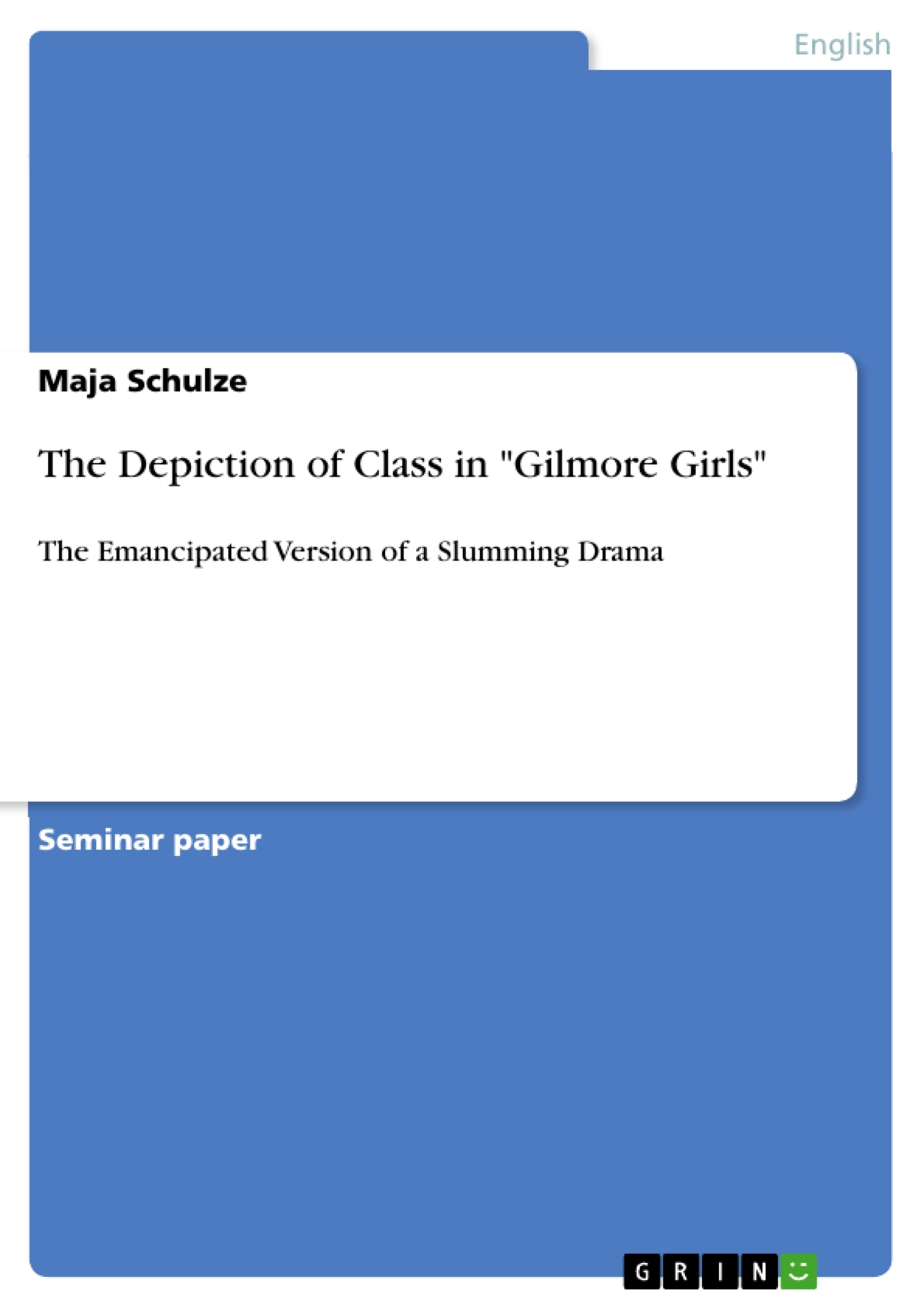This paper aims to analyse how and why the TV show Gilmore Girls has contributed to a new development in cross-class fiction. To answer this question satisfactorily, the concepts of the "slumming drama" (Gandal 2007: 12) as well as 'new womanhood' and 'middle class' will be explained precisely and applied to the series. In order to give the reader an idea about the show's content and to enable an easier comprehension of the analysis, the paper will start with a short introduction to the major story-lines.
Inhaltsverzeichnis (Table of Contents)
- Introduction
- Gilmore Girls - The Plot
- A Class Drama
- A Cross-Class Drama
- A Slumming Drama
- Lorelai's Slumming Drama
- Lorelai's Upbringing
- Lorelai's Slumming
- Lorelai's Slumming Drama - Conclusion
- Rory's Slumming Drama
- Rory's Slumming
- Rory's Slumming Drama - Conclusion
- Life After Slumming
- Changing Images of Women in the Media
- The Tough Women's Living Space
- Middle-Class Life in Gilmore Girls
- Emancipation in Gilmore Girls
- Conclusion
Zielsetzung und Themenschwerpunkte (Objectives and Key Themes)
This paper aims to analyze how and why the TV show Gilmore Girls has contributed to a new development in cross-class fiction. To answer this question, the concepts of the "slumming drama" (Gandal 2007: 12) as well as 'new womanhood' and 'middle class' will be explained precisely and applied to the series.
- The depiction of class in Gilmore Girls
- The "slumming drama" as a literary genre
- The portrayal of women's lives in the context of class and gender
- The representation of middle-class life in the US
- The theme of emancipation in Gilmore Girls
Zusammenfassung der Kapitel (Chapter Summaries)
The paper begins with an introduction to the plot of Gilmore Girls, focusing on the main characters, Lorelai and Rory Gilmore, and their lives in the town of Stars Hollow, Connecticut. It then analyzes the show as a class drama, exploring the concept of "slumming dramas" and how Gilmore Girls fits into this genre. The paper discusses Lorelai's experience as a young mother who escapes her upper-class family and builds a middle-class life, as well as Rory's journey through education and her own encounters with class differences. The paper also considers the broader themes of women's lives, middle-class experience, and emancipation in the context of the show.
Lorelai's "slumming drama" is explored through flashbacks to her youth, showcasing her escape from her restrictive upper-class family and her subsequent life in the working class. Rory's "slumming drama" involves her experience attending the elite Chilton Prep school and the challenges she faces as a result of her class background. The paper also analyzes the changing images of women in the media and how Gilmore Girls reflects these changes. The chapter on "Emancipation in Gilmore Girls" discusses the show's portrayal of women achieving independence and self-determination in their lives.
Schlüsselwörter (Keywords)
The paper focuses on the key concepts of class, gender, and emancipation. It explores the "slumming drama" genre and its contemporary adaptations, examining the themes of upward and downward mobility, as well as the representation of working class and upper-class characters. The paper also analyzes the portrayal of women in the media, particularly in the context of their lives in the middle class. Other important keywords include: "Gilmore Girls", "class drama", "slumming drama", "new womanhood", "middle class", "upper class", "working class", "emancipation", and "American television".
- Citation du texte
- Maja Schulze (Auteur), 2009, The Depiction of Class in "Gilmore Girls", Munich, GRIN Verlag, https://www.grin.com/document/262281



